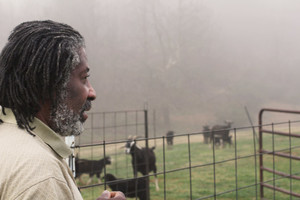A collection of portraits and stories of Black, Native, Asian and Latina farmers in the United States, digging into critical issues at the intersection of race and food to challenge the status quo of agrarian identity.
The book's message is that food and farming in the US is about more than buying local and protecting soil – it is also about preserving culture and community. You can read excerpts by clicking on the links below, and the book is available from New Society Publishers.
1. Building Autonomy as African American Farmers

2. These Sisters are Building a Second Career as Farmers
Heir property ownership is often the precursor to land loss and is identified by the Federation of Southern Cooperatives Land Assistance Fund as one of the top reasons for land loss among African Americans. With each passing generation of heir property owners who die without a will or other estate plan, a new generation of heirs inherits ownership of the land.
3. A Communal Vision for the Younger Generation
Land security is a big issue for young farmers. With more than half of all U.S. farmland owned by farmers 55 and over, and farmland disappearing due to development or prices increasing beyond affordability for new farmers, many are forced to rent. Young and beginning farmers pay the highest rates for leased farmland, and the majority of acres in operation by farmers under 35 consist of rented acres.
4. Seeds of Growth for the Cherokee People

"We’ve lost much of our agricultural land because of generational change, and we’ve also lost much of our wild gathering lands. The national park next to us doesn’t allow us to go into what were our traditional gathering areas to gather our wild foods. The mentality is conservation, but the misunderstanding is that Cherokee harvest with a philosophy of conservation.
"It’s a simple philosophy: If you destroy your resource, you have to move somewhere else to find another resource. If you want to have your home here and keep your resources, you don’t destroy them."